The Trifecta: C14's Last Natural History Retreat
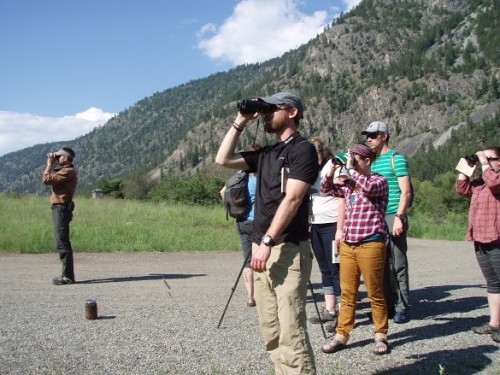
For the members of Cohort 14, everything is starting to come full circle. The Learning Center looks as it looked when we arrived last July: Pyramid’s faces are bare, Sourdough Creek has slowed to a trickle, the air is warm, and the winds are strong. Many things have changed in the intervening seasons. We taught two seasons of Mountain School, the latter of which ended just one week ago, completed final projects, and attended our last natural history retreat. As I have remarked in previous blog posts (and to anyone I talk to), these retreats have been one of the highlights of this graduate residency. They are a break from our hectic teaching schedule, a chance to reconnect as a cohort, and an opportunity to learn from passionate naturalists and scientists.
While our fall and winter retreats took us to the Methow Valley, we expanded our reach on our spring trip, traveling up to the Sinlahekin Valley. En route, we camped in Winthrop to hike up Tiffany Mountain. On Monday May 25th we hiked up about a mile before meeting large hail and stormy skies.
Foreboding skies over Tiffany.
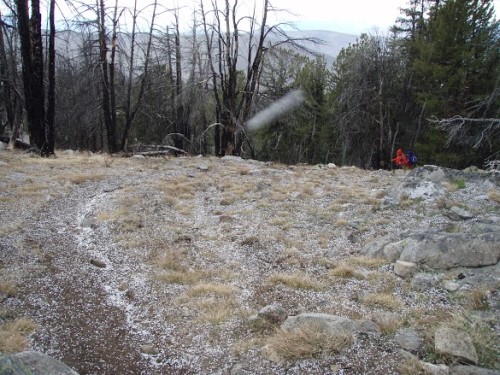
A sample of the hail
Not to be deterred, we returned on Tuesday and hiked to the top, experiencing sunshine, rain, sleet, hail, and snow on the way. We also had the first of our grad natural history project presentations and learned all about grizzly bears from Mike.
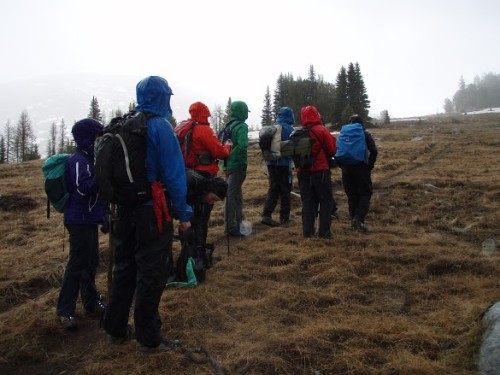 Captivated by something – probably Joshua – on our way up
Captivated by something – probably Joshua – on our way up
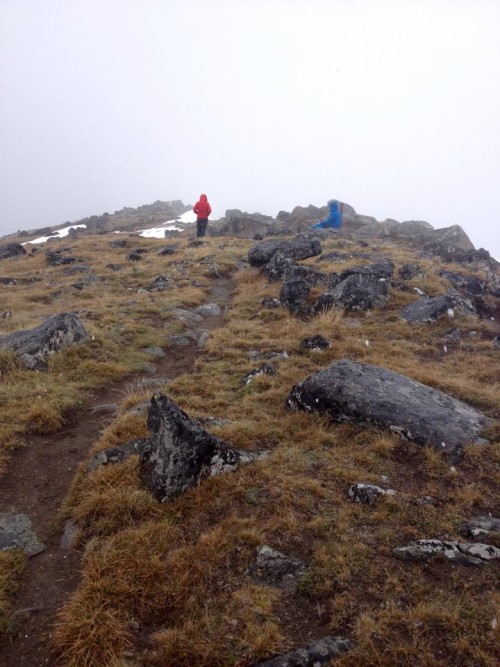 Myself and Mike on the summit, quite cold (photo by Chelsea Ernst)
Myself and Mike on the summit, quite cold (photo by Chelsea Ernst)
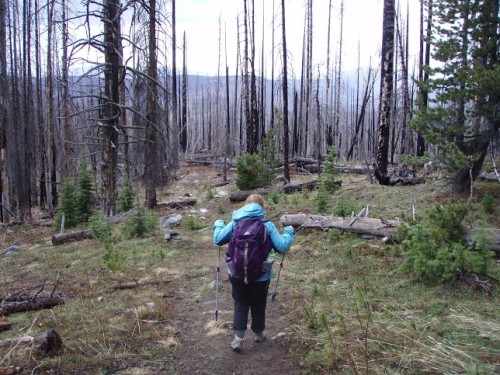 Rachel lower down and out of the snow on Tiffany
Rachel lower down and out of the snow on Tiffany
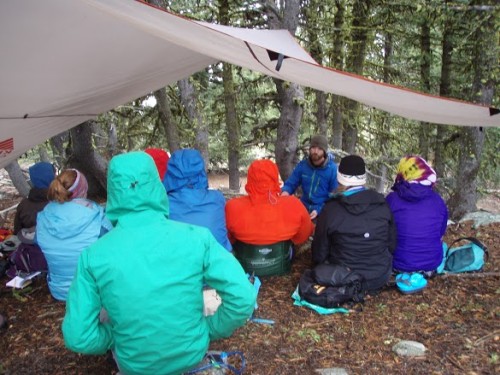 Mike teaching us about grizzly bears under an improvised shelter
Mike teaching us about grizzly bears under an improvised shelter
Tuesday evening took us the shore of Black Pine Lake near Twisp, at the base of Hoodoo Mountain. Frogs sang us to sleep that night before a near-deafening dawn chorus of birds woke us the next morning. (Many a game of Kubb was played.)
On Wednesday morning we heard Liz’s natural history presentation on the relationship between beavers and fire ecology before, fittingly, meeting up with members of the Methow Beaver Project at the Libby Lake Trailhead to aid in the rerelease of a pair of beavers: Chuck and Linda. A few of us (Petra, Liz, and Kelly) had previously helped with Linda’s intake about a week prior at the Fish Hatchery in Winthrop. Armed with loads of aspen branches a cage full of beavers, we hiked a short ways on the trail before arriving at the spot determined to be the best beaver habitat by the Project’s wildlife biologists. We guided the beavers into the previously constructed lodge, covered them with aspen branches (to provide both food and shelter) and left them to their own devices.
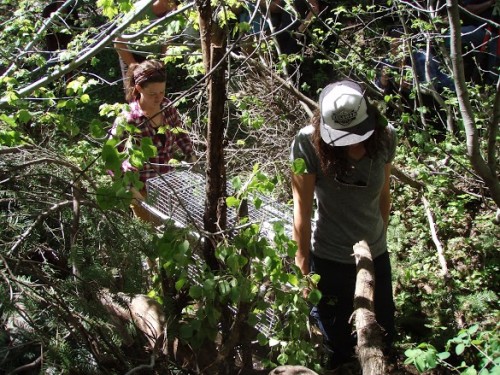 Liz and Katherine (of the Methow Beaver Project) maneuver Chuck and Linda across the creek
Liz and Katherine (of the Methow Beaver Project) maneuver Chuck and Linda across the creek
After the release, we drove out to the Sinlahekin Valley, passing fields of sagebrush and wildflowers on the way. We found a camping spot among the ponderosa pines near Blue Lake. We enjoyed an afternoon of pursuing our own adventures (including a lot of bushwhacking, climbing impossibly steep slopes, and finding flowering cacti!) before the arrival of Libby Mills. Libby joined us for dinner and prepared us for the next day: a day of birding.
Thursday started early with a wander around camp to listen to and attempt to spot birds. Over the course of the day we visited several spots and identified over 50+ varieties of birds, under Libby’s patient watch. Being a total amateur in the world of birding, I was exhausted after a couple of hours. Birding is infinitely more tiring than I’d imagined.
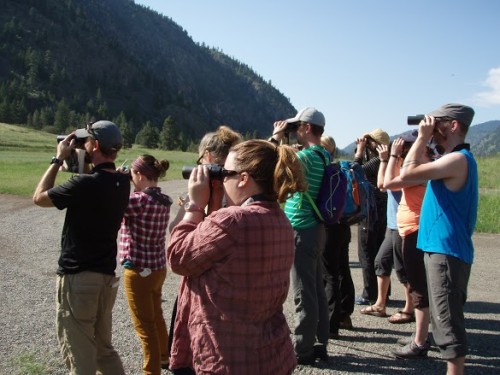
This was a pretty common sight
On Friday morning, our last day, we met up with a familiar face. Back in February, during our winter natural history retreat, we attended a talk at North Cascades Basecamp about native bees with Dr. Don Rolfs. Most of us (previously unversed in nearly anything relating to bees) were captivated by Dr. Rolfs’s enthusiasm and humor, and were thrilled that he agreed to join us for a half-day in the field. A side note: he calls his lectures “edutainment,” and the term is perfectly applied. Go see him speak if you ever have the chance. Ever. After a demonstration of his custom-built bee boxes and some work with the identification of bees vs. wasps vs. flies, Dr. Rolfs set us loose with nets and test tubes to catch bees. This felt like a surreal experience for a person who spent her childhood being deathly afraid of bees.
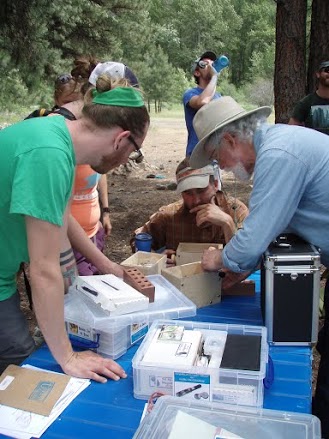
Dr. Rolfs demonstrating his custom-fabricated bee boxes
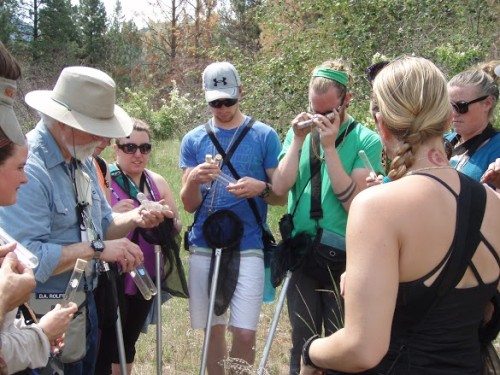
Examining our specimens
I will miss these retreats terribly. Each organization or individuals with whom we’ve worked has been an inspiration. From Libby’s encyclopedic knowledge of birds and eternal patience, to Dr. Rolfs’s dedication to a still-emerging field, to learning about linocuts and snow science in Winthrop, we have been blessed to learn from the best. Personally, these retreats ignited a new fire with me: a fascination with wildlife biology and a drive to learn more, more, more. I consider that the greatest success.
*All photos taken by Lindsey MacDonald unless otherwise noted.


Sounds like a great time out in THE NATURE, paying attention, poking around, and in all ways, being present to the moment. Thanks Petra, for making it real for those of us who live vicariously through your writing.
As a parent of chort 14’s Liz Blackman, we heard about the May adventure and now have enjoyed your photos and comments. We will miss the chort’s mountain adventures but will cherish the memories we have heard from Liz. Best of luck with the next phase of your studies down in Bellingham.